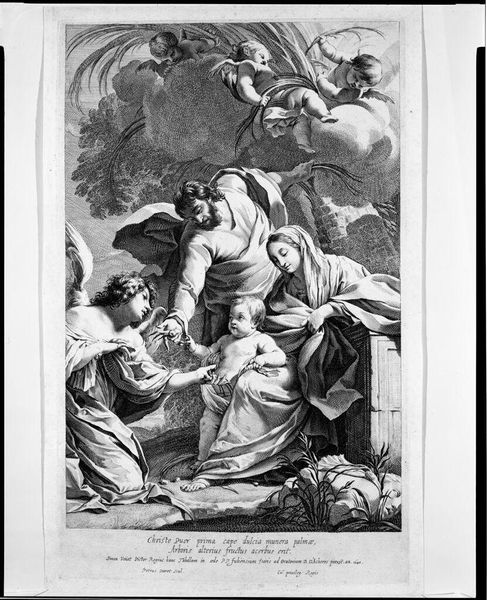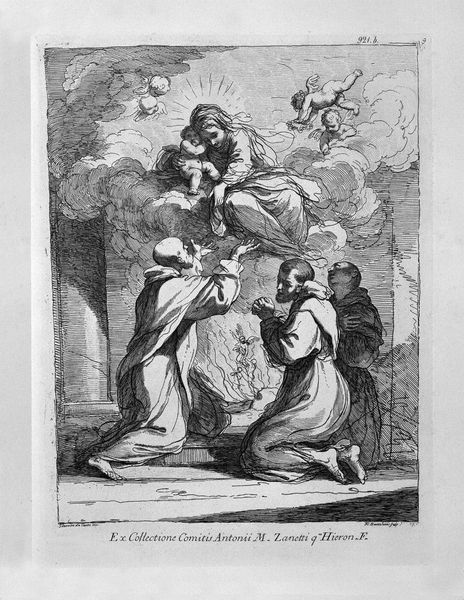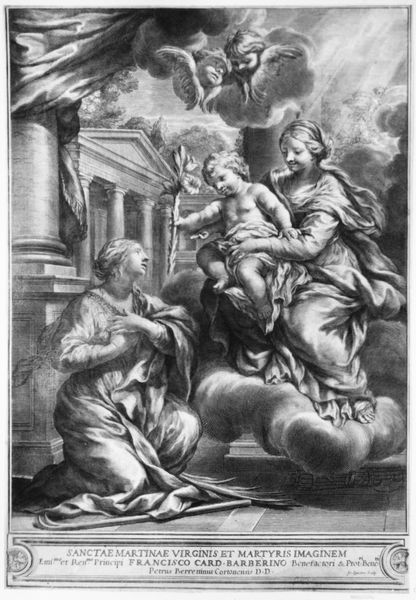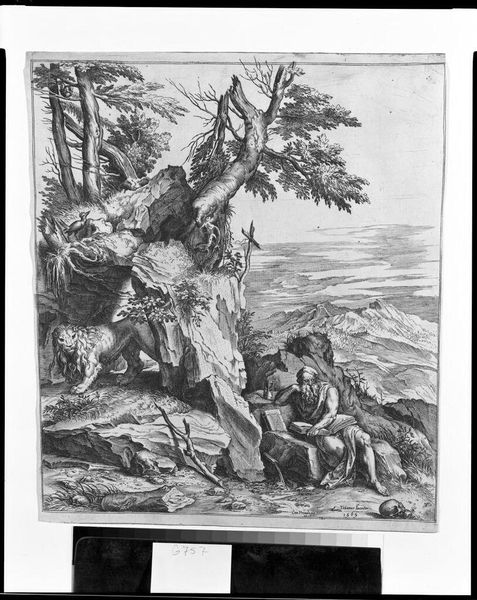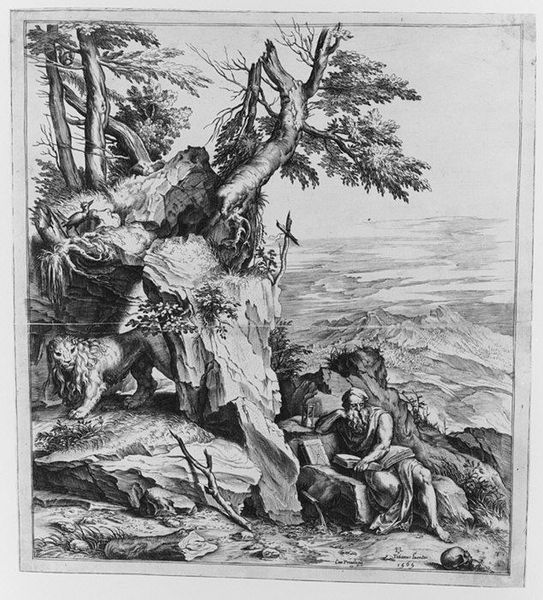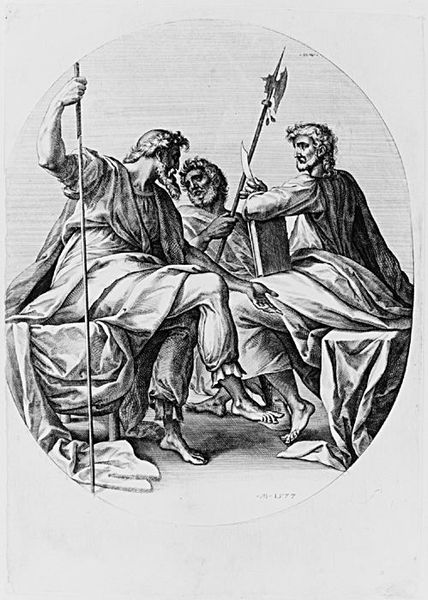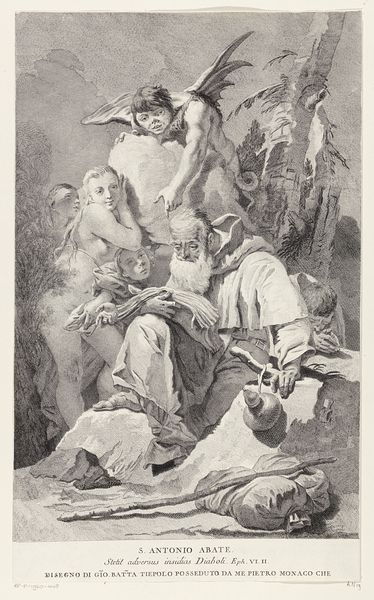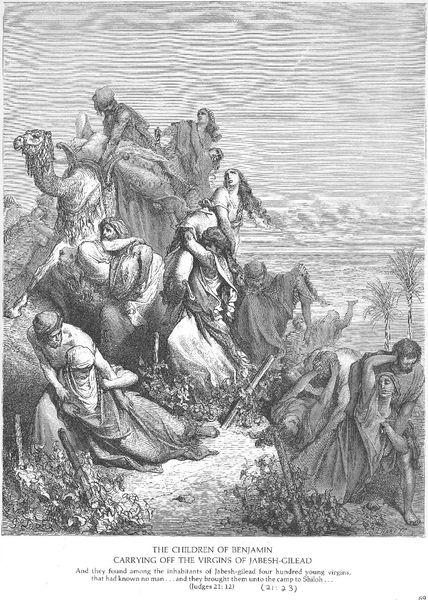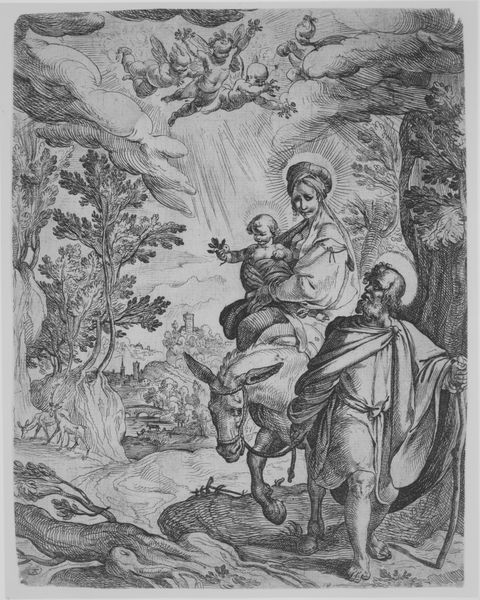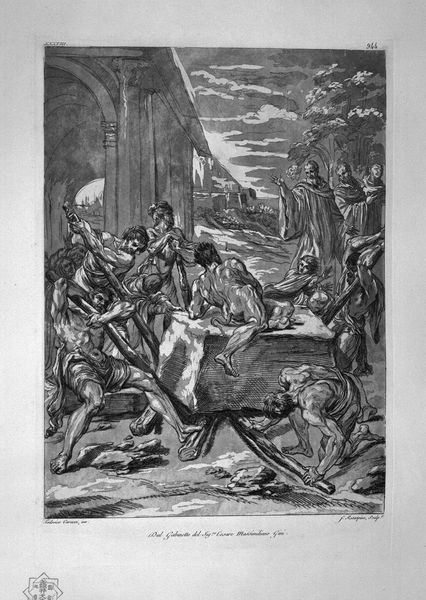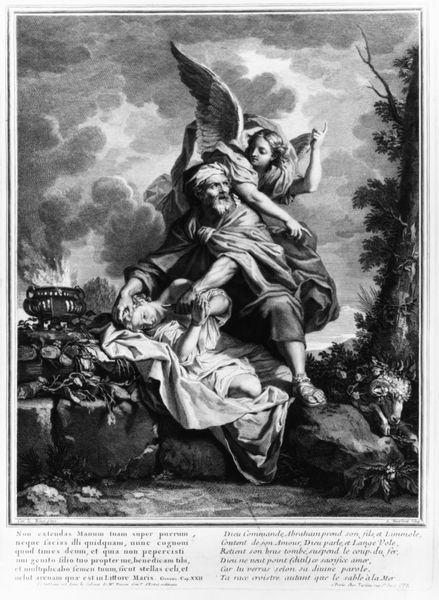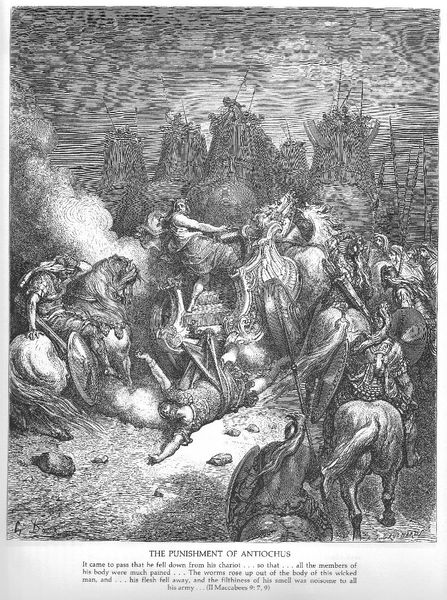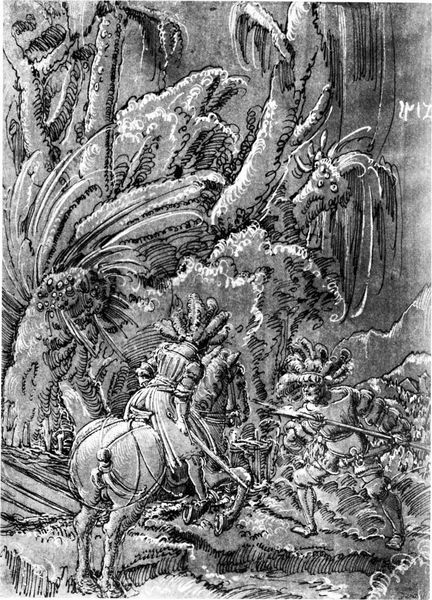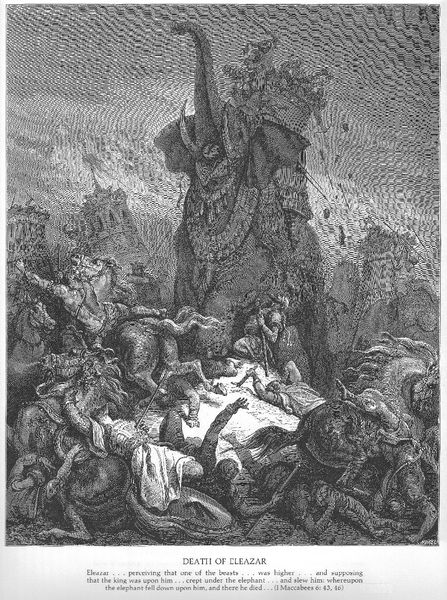
Asia! Thy trade, thy silks and spicy stores, But ill compensate for a Land of Slaves, Whilst Liberty disdains to bless thy Shores, And Luxury thy nerv'less sons depraves 1755 - 1765
0:00
0:00
Dimensions: sheet: 13 3/4 x 9 7/8 in. (34.9 x 25.1 cm)
Copyright: Public Domain
Curator: This engraving by James Moore, likely created between 1755 and 1765, bears the title "Asia! Thy trade, thy silks and spicy stores, But ill compensate for a Land of Slaves, Whilst Liberty disdains to bless thy Shores, And Luxury thy nerv'less sons depraves." It's quite a mouthful! Editor: My immediate impression is that of a tableau frozen in time. The composition is fascinating; the way the figures are arranged feels both intimate and detached, especially with the dense vegetation framing the scene. Curator: Indeed, the framing adds a layer of exoticism, reinforcing the Orientalist themes prevalent in the mid-18th century. The symbols are blatant, you see it in every line of the verse. Asia is visually presented through the easily recognizable objects – silks, spices, the leisurely smoking, and then overtly condemned because “Liberty disdains to bless thy Shores.” This liberty here takes the guise of virtue against Eastern decadence. Editor: Yes, that’s an interesting point. Looking at the engraving technique itself, the stark black and white contrast emphasizes this duality. The light falls dramatically on the figures, almost spotlighting their perceived moral failings while they casually pass the hookah. The linearity almost mimics neoclassical draughtsmanship to heighten the emotional charge. Curator: It is that clear dichotomy between East and West, luxury and liberty, that resonates throughout the engraving, revealing a cultural memory still grappling with colonial ambitions and moral justifications. Editor: I see what you mean. Beyond the explicit symbolism, the carefully arranged lines, shading and compositional structure create a stage for the drama to play out. There is an argument to be made about the tension between the visual aesthetic and its problematic rhetoric. Curator: Precisely, and recognizing the complexities and contradictions in a single image expands our awareness of history itself. It's not a flat, linear narrative, but rather, a textured story rich in multiple layers of social and cultural values. Editor: Absolutely. Thinking about it purely visually, it's a technically accomplished print that effectively conveys a specific narrative, regardless of whether we agree with its sentiment today. Curator: The emotional weight carried in visual language remains incredibly potent. It shows us a lens to past prejudices, and possibly even the remnants of them.
Comments
No comments
Be the first to comment and join the conversation on the ultimate creative platform.
